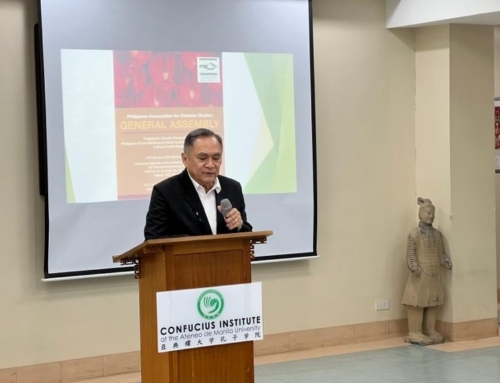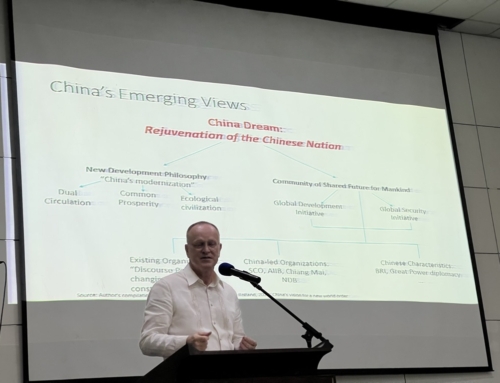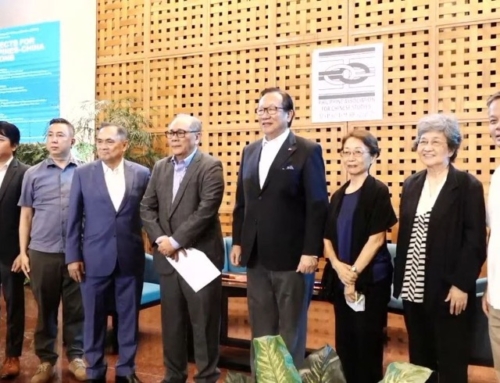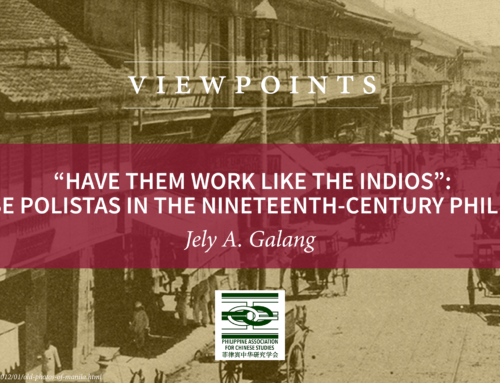by Lucio Blanco Pitlo III
New Philippine President Ferdinand R. Marcos Jr. aims to take Philippines-China relations to the next level, and rightly so. The past six years under his predecessor, Rodrigo Duterte, showed how managing disputes despite challenges and fostering productive ties between the two neighbors redound to the country’s benefit. Broader ties should be insulated from differences, which should be handled through dialogue and diplomacy. Three areas for cooperation show promise and jibes with the country’s priorities – infrastructure, agriculture, and energy.
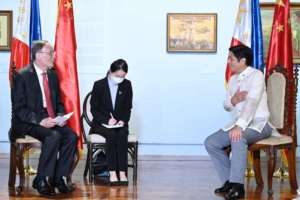
PBBM meets VP Wang Qishan (Source: Xinhua)
In his first State of the Nation Address (SONA) last July 25, Marcos outlined his plan to address the country’s urgent needs, steer its recovery, mitigate the blow of external shocks and enhance competitiveness. The new chief executive said that “the need for strong bonds and collaboration among nations emerges in the direst of times, such as a pandemic.” In a speech he gave before the Award for Promoting Philippines-China Understanding three weeks before his inauguration, he described Beijing as the country’s “strongest partner.”
Marcos recognized China’s timely assistance in the early phase of the fight against Covid-19. He understands China’s growing role in the Philippine economy, a feat facilitated by friendly ties cultivated by Duterte. China is consistently the country’s largest trade partner since 2016. Last year, bilateral trade reached US$38billion, representing a 24.9 percent year-on-year increase. China is the country’s top import source and second-largest export market. In 2020, despite the pandemic, it was the country’s second-largest investor and, before the pandemic, was the country’s fastest-growing tourist market. It also became a new force in Philippine infrastructure. Marcos can build on this robust foundation.
Infrastructure, agriculture, and energy are among the three key sectors the president identified in his first SONA. Marcos pledged to continue and expand on Duterte’s infrastructure legacy. The president described infrastructure as “the backbone of an economy,” pointing that it is a “necessary element” to improve other sectors like agriculture, tourism, and even governance. The Russia-Ukraine War, on the other hand, exposed the country’s vulnerabilities as a food and energy importer. It stressed the need to harness local resources and mitigate external reliance on these crucial goods. Signaling the high importance he attaches to ensuring the country’s food security and uplifting the plight of farmers, the president is concurrently heading the country’s Department of Agriculture. The surge in global oil prices and the looming exhaustion of Malampaya, the country’s largest natural gas field, underscores the urgency to tap indigenous potentials, including renewables. China’s capacity and advances in these areas make it a suitable partner.
Infrastructure
In infrastructure, interest rates in China’s US$ denominated loans are competitive to other lenders like Japan and South Korea. For instance, Chinese funding for the Chico River Irrigation and Kaliwa Dam projects has a nominal interest rate of 2 percent with a 20-year maturity period and a seven-year grace period. When converted into the greenback, interest in Japanese loan for the North-South Commuter Rail is at 2.7 percent for the same terms, while Korean financing for the New Cebu International Container Port is at 1.36 percent. China’s cost per unit, such as its railway cost per kilometer, and construction speed are also industry pacesetters. These advantages make Beijing a formidable global infrastructure player. In the rail sector of Southeast Asia alone, it has already delivered Vietnam’s first rapid urban transit and Laos’ first high-speed railway (HSR). It is also building Indonesia’s first HSR connecting Jakarta and Bandung. It is likewise working to bring the east and west coasts of peninsular Malaysia together through the East Coast Rail Link.
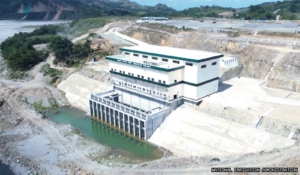
Chico river pump irrigation project (Source: National Irrigation Authority)
In the Philippines, China donated two drug rehabilitation centers in Mindanao and two river bridges in Metro Manila. It completed the Chico River irrigation project in northern Luzon and is building the Kaliwa Dam which will enhance the capital region’s water security. It is also engaged in three railway projects whose implementation Marcos can preside over. Apart from the usual time spent on negotiations, stringent due diligence and bureaucratic delays from both sides, political risk associated with leadership change may have held back the fulfillment of follow-through steps of these projects in the lead-up to the May elections. That said, while reviewing these contracts may be pursued, renegotiating may also have its downsides as the funder may factor in inflation and the cost of money to raise project budgets. Whichever the case, the synergy between the Philippines’ connectivity aspirations – from Duterte’s “Build, Build, Build” to Marcos’ “Build Better More” – and that of China’s Belt and Road Initiative is manifest.
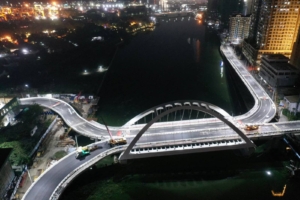
Binondo-Intramuros Bridge (Source: Philippine Information Agency)
Agriculture
As the world’s largest consumer market, access to China also offers a windfall for agricultural exporters like the Philippines. Last year, the Philippines exported $490 million worth of bananas to China. From 2019 to 2021, its average annual pineapple exports to its big neighbor exceed $100 million. Chinese innovations in agricultural science, such as in high-yielding and climate-resilient hybrid rice varieties, can also enhance Philippine food security. The Philippine-Sino Center for Agricultural Technology, established in 2000 in Muñoz, Nueva Ecija, can play a critical role in this regard.
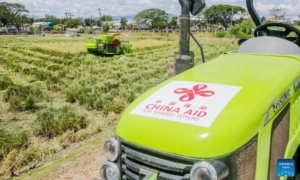
China-donated farm machinery (Source: Xinhua)
Aside from crude and grain, the conflict in Ukraine also shoot up the prices of fertilizers, prompting countries to curb exports to meet local needs. China donated P4 million worth of fertilizers to the country last March and Manila is raring to ink a supply deal to ensure access to this vital agricultural input. Chinese farming know-how and best practices and low-cost farm machineries, which can be built in the country and extended via credit to cooperatives, can also help modernize local farming. Moreover, Chinese finance can help build more irrigation, farm-to-market roads, grain silos, and agri-processing facilities.
Energy
In the field of energy, non-prejudicial and practical joint development in the West Philippine Sea may enable Manila to exploit offshore oil and gas in Recto Bank to replace the aging Malampaya. Marcos said that natural gas could diversify the country’s primary energy sources and complement variable energy derived from renewables. An enabling law to develop the country’s midstream natural gas industry was one of the president’s proposed priority legislative measures. China is also a stalwart in green energy, being the world’s largest producer of hydro, solar, and wind power. A Chinese company, for instance, was contracted by AC Energy Corporation, a unit of local conglomerate Ayala, to build the country’s largest solar farm in San Marcelino, Zambales.
Indeed, there is much space for Philippines-China cooperation. The key to taking bilateral relations to the next stage lies in handling differences deftly so that they do not affect overall ties.
Image source: Foreign Policy Research Institute (https://www.fpri.org/wp-content/uploads/2021/07/china-philippines-scaled.jpeg)

